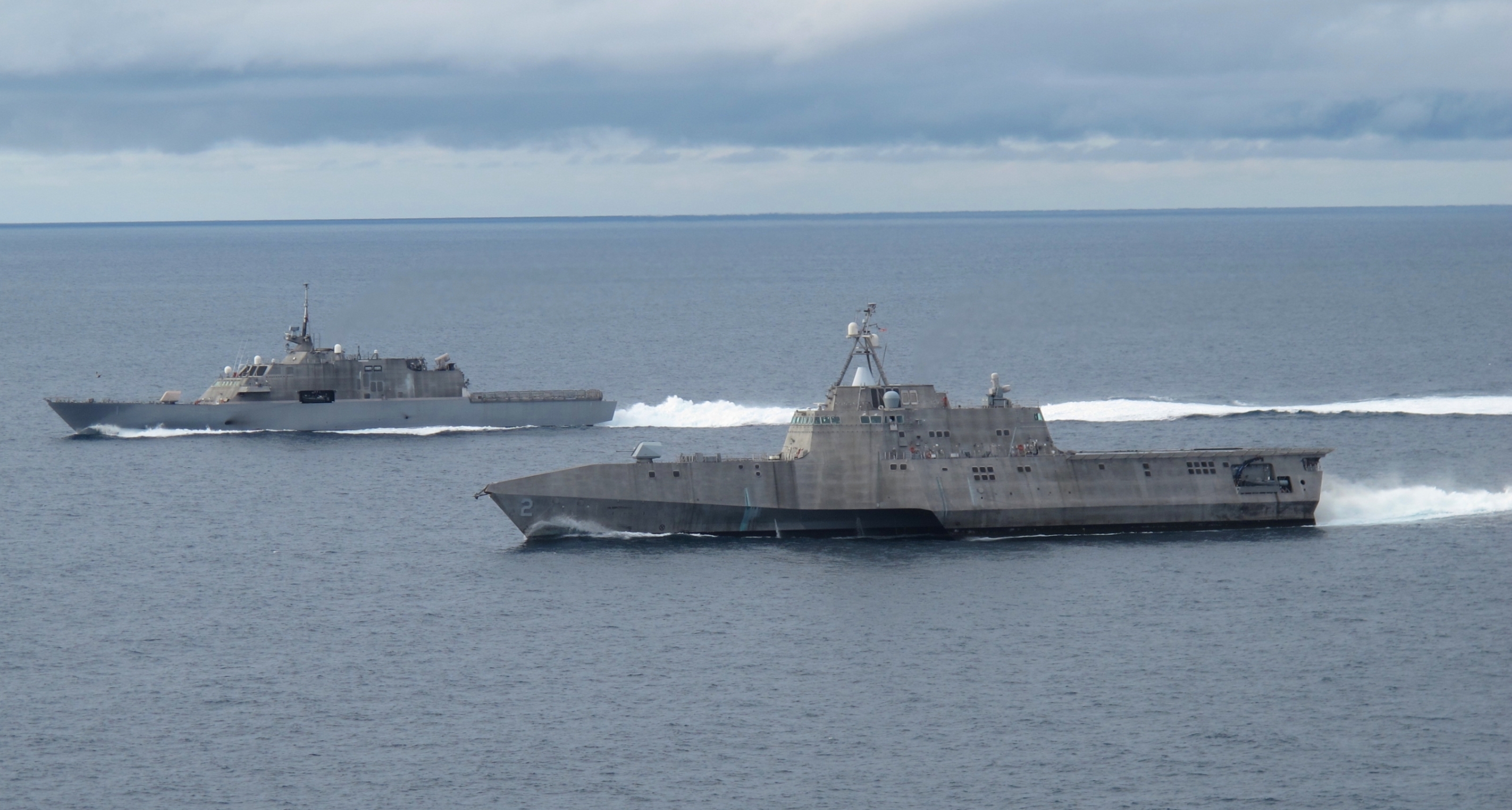
The Pentagon’s chief weapon’s tester is throwing his weight behind a Senate recommendation for the Navy to build land-based test versions of the engineering plants for the Freedom-class and Independence-class Littoral Combat Ships, according to a Tuesday statement.
Following four individual engineering casualties on both variants within the last year,
director of Operational Test and Evaluation (DOT&E) J. Michael Gilmore told USNI News he supported a Senate, “recommendation to establish a land-based testing facility for LCS propulsion sets.”
The Senate included the recommendation in report language attached to its version of the Fiscal Year 2017 National Defense Authorization Act (NDAA).
“The committee believes establishing a LCS propulsion and machinery control test capability would provide the Navy with a critical resource that is currently lacking to troubleshoot issues, identify root causes of casualties, and provide in-depth training to sailors,” read the report.
“The net effect of such a test capability would be to reduce the time, cost, and inexperience associated with LCS propulsion and machinery control casualties.”
In his statement, Gilmore said, “given the history of significant issues with LCS propulsion systems, I support the Senate recommendation to establish a land-based testing facility for LCS propulsion sets. Such a facility could support both testing and training.”
The Navy has several propulsion plant test sites at its Naval Surface Warfare Center in Philadelphia, Pa. for other ships, including the Arleigh Burke-class guided missile destroyers (DDG-51) and the Zumwalt-class destroyers (DDG-1000).
In a 2015 white paper obtained by USNI News, the Pentagon estimated it would take about $221 million to build the land-based test sites in Philadelphia.
“Since there are two unique LCS variants, this estimate includes propulsion plants and machinery control systems of both types. The recommended site would include one-half of the propulsion plant from each variant, excluding the water jets which would be replaced by water brakes,” read the paper.
For the Freedom site, the recommended equipment would include a Rolls Royce MT30 gas turbine and a Fairbanks Morse Colt Pielstick PA6B-STC Diesel Engine married through a RENK combining gear tied to a water breaks to simulate the water jets of a Freedom-class ship. The site would also include “all the hardware associated with the Lockheed Martin Machinery Plant Control and Monitoring System (MPCMS)” and “one Isotta Fraschini Ships Service Diesel Generator (SSDG).”
For the Independence-class, the recommended site would include one General Electric LM2500 gas turbine, one MTU 8000 diesel engine and two RENK gear boxes, shafts and water breaks. The site would also include “the equipment that makes up the L3 Engineering Control System (ECS)” and “one MTU SSDG.”
Gilmore’s statement comes as the Navy is in the midst of a retraining push for its LCS crews following engineering casualties aboard USS Freedom (LCS-1) and USS Coronado (LCS-4).
The focus of the effort and the brief “engineering stand down” was on training sailors with fewer mentions of examining potential engineering shortfalls in either ship’s design.
“These stands down allowed for time to review, evaluate, and renew our commitment to ensuring our crews are fully prepared to operate these ships safely,” commander, Naval Surface Forces Vice Adm. Tom Rowden said in a late Monday statement.
What remains to be seen is what additional LCS operational, manning and equipping changes the service will implement following the conclusion of the Navy’s most recent LCS review and how they may affect how crews operate the propulsion systems on either variant.
The new report from the Littoral Combat Ship Review, created by Chief of Naval Operations Adm. John Richardson and acquisition chief Sean Stackley, could be briefed to Congress as soon as this week, USNI News understands.





